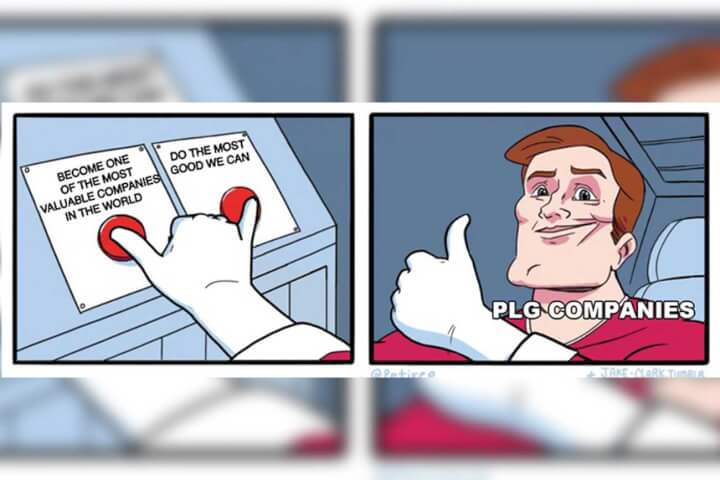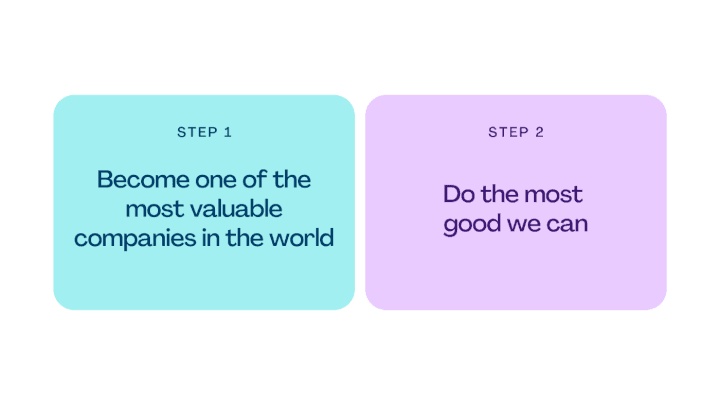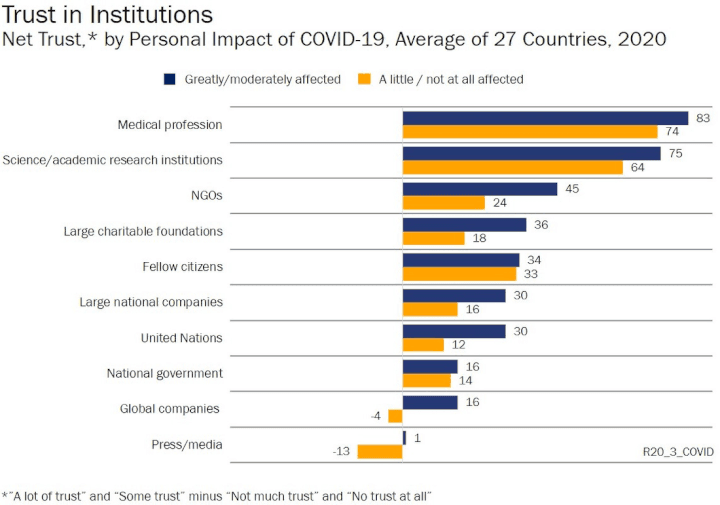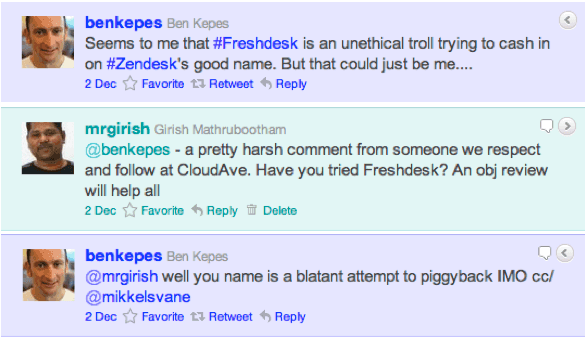Product Led Growth as a force for good
Product Led Growth as a force for good
Product Led Growth as a force for good
Canva, Stripe, Substack, Replit, Freshworks as flag-bearers of Product Led Growth (PLG) as a force for cultural change in the world
Canva, Stripe, Substack, Replit, Freshworks as flag-bearers of Product Led Growth (PLG) as a force for cultural change in the world
Canva, Stripe, Substack, Replit, Freshworks as flag-bearers of Product Led Growth (PLG) as a force for cultural change in the world



It’s been nearly six months since we started this crazy journey called Toplyne. Over the last few years, we’d fallen in love with PLG (Product Led Growth) companies through our time in venture capital and wanted to participate in the product-led world in our own little way. There was something about these companies, their stories, and their missions that entirely captured our imaginations.
Was it the fact that they were great businesses? Of course, they are, but that wasn't it. Was it the conversations with the brilliant minds that ran these businesses that we enjoyed? Most definitely, but not entirely! So what was it? It’s been six months and the answer is clear as day to us today.
It’s the positive impact these businesses can have on the world and its people.
Whether it's Shopify empowering individuals to own their own businesses and therefore their destinies. Or Replit empowering 10s of millions of young students to learn to code (for free) thereby giving them a shot of uplifting their families and communities. Or Canva and its founders pledging a majority of their equity to do good in the world through the “Canva foundation.”
We truly believe that the success of Product-Led Growth (PLG) companies can be a force for good in our world, and we are truly fortunate to be able to contribute in our own little way.
✨ Product-Led Growth and the cultural shift it pioneered
Coming up against the incumbents in 2009, on paper, Stripe’s only advantage was their top-of-the-line product. None of the big boys were worried about what the Collison brothers were cooking up out of Palo Alto. It didn’t take Stripe long to turn the tables, and seriously worry them, but to their surprise, there was surprisingly no competitive backlash as a result.
What was playing out was the culmination of a couple of decades of evolution in product discovery. Stripe was about to ride the first waves of the product-led growth era and a completely new way of product adoption and discovery. In this new playing field, companies competed on the merit of the product itself, and on this playing field, Stripe was always going to win.

Replace Stripe with any other up-and-comer in any industry and the story remains the same. If all your GTM eggs were in the sales or marketing baskets, you were a sitting duck for the big names to come after with a bigger billboard or louder TV ad. The common wisdom of the time suggested that Stripe was never going to make it. On paper, Stripe was dead before they had even started.
The shift in focus away from sales and marketing to the core product represented a fundamentally new way of thinking: In this new democracy, the incentives were different. It wasn’t about appearances anymore. Your success depended directly on end-user experience.
Suddenly, individuals mattered. This is a tectonic cultural shift in how software is built.
Product-led growth puts the individual at the center and incentivizes companies to improve not just the user experience, but everything that contributes to it. This alignment of user well-being with company incentives has given and continues to give the world a lot to be optimistic about in the product-led era, and we are excited to build for this world.
🤝 Canva and the virtuous circle of doing good in the world
With 60 million active users in 190 countries and a mission to “empower the world to design”, there aren’t many better examples of a great product-led motion than Canva. Canva’s deeper mission revolves around a two-step plan:

Earlier in September of 2021, Canva announced that their valuation had jumped to $40B on the back of their $200 million funding led by T. Rowe Price. Step 1, check ✅
Bringing step 2 to life has been part and parcel of the product, and as participants in the 1% pledge, Canva has always been committed to allocating 1% of their equity, profits, time, and product to be a force of good in the world.
But on the back of their fresh round of funding, CEO Melanie Perkins announced an update to their two-step plan: That she and her husband/co-founder Cliff Obrecht were going to donate the vast majority of their equity (30% of Canva) to doing good in the world through Canva Foundation.
“We have this wildly optimistic belief that there is enough money, goodwill, and good intentions in the world to solve most of the world’s problems, and we want to spend our lifetime working towards that.“ - Melanie Perkins, CEO
Canva's deeper mission underscores the alignment of incentives with the end-user.
The more Canva is able to give back to the world, the more valuable Canva was going to be as a company, ad infinitum.
👩🏻💻 Replit and the power of code in the hands of everybody
20-30%. That’s the contribution technology companies have towards global market capitalization! And who writes the code that powers this modern-day renaissance? Roughly 30 million software developers. That’s less than 0.4% of the world’s population.
The world needs more developers. A few 100 million to be precise. But developers don't apparate out of thin air 🪄
They need to be coached from a young age, exposed to technology, taught to code, be given the freedom to try and fail, and be equipped with tools that aid their education.
In short, it takes a village to raise a developer. Or… maybe it takes just one visionary product.
Today, Replit has 5M+ users under the age of 18 using the product not to ship features for their employer but to explore and hack their way into the limitless possibilities of software. Many of them in the developing world with limited access to learning resources. Fast forward a few years, millions of them will go on to become trained developers, write code, create value for the world, start the next set of legendary companies, and in the process uplift the lives of their families, communities, and inspire millions of children looking up to them as role models for a better tomorrow.
And all because, a young startup decided to give them free access to a power programming environment - no strings attached ️😌
📜 Stripe & the importance of being good ancestors
Back in July, 2019, Stripe founder Patrick Collison and economist Tyler Cowen lit a fire under the conversation around "progress studies" through a piece in the Atlantic. The progress studies piece in the Atlantic starts with the story of Collison’s alma mater - MIT, which was established back in 1861 when William Barton Rodgers published a manifesto calling for a new kind of research institution.
Academic structures and the way they have come to the aid and sometimes stand in the way of researchers today is hardly a new concern for the Stripe CEO. Earlier this month, the Stripe founder announced a new kind of research institution.
He established the Arc institute in partnership with Stanford, UC Berkeley, and UCSF. Arc is an independent non-profit research organization that will conduct basic research in a fundamentally new way. The Institute aspires to mitigate the bureaucratic resistance that researchers today are met with, and return science to the scientists. On the back of the learnings from an effort to speed up scientific funding during the pandemic (fast grants), Arc will explore a variety of institutional configurations through talent clusters, and start out by focusing on genetic diseases, cancer, neurodegenerative and immune-related disorders.
While he's fully focussed on Stripe, in establishing Arc, Collison clearly has a Jonas Salk quote in mind - the one that he quotes in this terrific must-read interview here:
“It’s important to be good ancestors!”
✍🏻 Substack: Empowering voices that the world needs to hear
Words. The atomic unit of collaboration. Despite innovation on cutting edge collaboration tools, lightning-fast communication networks, and asynchronous work paradigms, the written word remains the #1 system of record and communication medium for the best of humanity’s ideas. But with power comes great responsibility. And that’s where the venerable public institutions of the past have recently dropped the ball. In fact, of the largest public institutions that come to mind - ‘the Press / Media’ ranks the lowest in public trust!

Despite the divisive nature of our press/media institutions - Substack was able to see through the clouds of negativity. The answer?
We don't trust the press as an institution, but we sure do trust our best reporters and thought leaders.
2021 was a pivotal year for Substack’s mission of “Building a better future for writing”. Hundreds, if not thousands of esteemed journalists, left the institutions they worked at for decades to start their own independent publications on Substack. And guess who followed? Tens of thousands of enthusiastic readers and fans. Ready to pay a premium to read their unbiased thoughts. That’s the power of product-led growth
💡 Freshworks and the power to inspire billions
There are IPOs and then there are IPOs that inspire 1.4 billion people.
Freshworks is a case study of the latter. Building global products out of emerging geographies isn't easy. It's a tough world out there. Your product, go-to-market motion, roadmap, and right to win need to be several times more apparent and impressive than a counterpart building in the US, EU, or ANZ. And that’s exactly the challenge that Freshworks faced from Day 1. Repeatedly accused of building a Zendesk copycat, cut to 10 years later, Freshworks' market cap today is within striking distance of Zendesk, briefly surpassing it a month ago!

Freshworks’ Nasdaq IPO was a watershed moment for the Indian SaaS ecosystem. The IPO created 500 millionaires, in the process uplifting the lives of 1000s of families, creating 100s of angel investors armed with the capital and more importantly the know-how of building large-scale global SaaS companies.
SaaS is moving eastward and PLG is making this inevitable. 😉
⏭ What's next?
Product Led Growth has begun to align the incentives of individuals and end-users with that of big tech, and we're beginning to see how that plays out through the examples of early surfers of the PLG wave. While we take stock of the good that PLG has brought to the world so far, it's important to also note that we're still at the cusp of the PLG evolution in SaaS. As another year comes to a close, what lies in store for 2022 is truly exciting.
It’s been nearly six months since we started this crazy journey called Toplyne. Over the last few years, we’d fallen in love with PLG (Product Led Growth) companies through our time in venture capital and wanted to participate in the product-led world in our own little way. There was something about these companies, their stories, and their missions that entirely captured our imaginations.
Was it the fact that they were great businesses? Of course, they are, but that wasn't it. Was it the conversations with the brilliant minds that ran these businesses that we enjoyed? Most definitely, but not entirely! So what was it? It’s been six months and the answer is clear as day to us today.
It’s the positive impact these businesses can have on the world and its people.
Whether it's Shopify empowering individuals to own their own businesses and therefore their destinies. Or Replit empowering 10s of millions of young students to learn to code (for free) thereby giving them a shot of uplifting their families and communities. Or Canva and its founders pledging a majority of their equity to do good in the world through the “Canva foundation.”
We truly believe that the success of Product-Led Growth (PLG) companies can be a force for good in our world, and we are truly fortunate to be able to contribute in our own little way.
✨ Product-Led Growth and the cultural shift it pioneered
Coming up against the incumbents in 2009, on paper, Stripe’s only advantage was their top-of-the-line product. None of the big boys were worried about what the Collison brothers were cooking up out of Palo Alto. It didn’t take Stripe long to turn the tables, and seriously worry them, but to their surprise, there was surprisingly no competitive backlash as a result.
What was playing out was the culmination of a couple of decades of evolution in product discovery. Stripe was about to ride the first waves of the product-led growth era and a completely new way of product adoption and discovery. In this new playing field, companies competed on the merit of the product itself, and on this playing field, Stripe was always going to win.

Replace Stripe with any other up-and-comer in any industry and the story remains the same. If all your GTM eggs were in the sales or marketing baskets, you were a sitting duck for the big names to come after with a bigger billboard or louder TV ad. The common wisdom of the time suggested that Stripe was never going to make it. On paper, Stripe was dead before they had even started.
The shift in focus away from sales and marketing to the core product represented a fundamentally new way of thinking: In this new democracy, the incentives were different. It wasn’t about appearances anymore. Your success depended directly on end-user experience.
Suddenly, individuals mattered. This is a tectonic cultural shift in how software is built.
Product-led growth puts the individual at the center and incentivizes companies to improve not just the user experience, but everything that contributes to it. This alignment of user well-being with company incentives has given and continues to give the world a lot to be optimistic about in the product-led era, and we are excited to build for this world.
🤝 Canva and the virtuous circle of doing good in the world
With 60 million active users in 190 countries and a mission to “empower the world to design”, there aren’t many better examples of a great product-led motion than Canva. Canva’s deeper mission revolves around a two-step plan:

Earlier in September of 2021, Canva announced that their valuation had jumped to $40B on the back of their $200 million funding led by T. Rowe Price. Step 1, check ✅
Bringing step 2 to life has been part and parcel of the product, and as participants in the 1% pledge, Canva has always been committed to allocating 1% of their equity, profits, time, and product to be a force of good in the world.
But on the back of their fresh round of funding, CEO Melanie Perkins announced an update to their two-step plan: That she and her husband/co-founder Cliff Obrecht were going to donate the vast majority of their equity (30% of Canva) to doing good in the world through Canva Foundation.
“We have this wildly optimistic belief that there is enough money, goodwill, and good intentions in the world to solve most of the world’s problems, and we want to spend our lifetime working towards that.“ - Melanie Perkins, CEO
Canva's deeper mission underscores the alignment of incentives with the end-user.
The more Canva is able to give back to the world, the more valuable Canva was going to be as a company, ad infinitum.
👩🏻💻 Replit and the power of code in the hands of everybody
20-30%. That’s the contribution technology companies have towards global market capitalization! And who writes the code that powers this modern-day renaissance? Roughly 30 million software developers. That’s less than 0.4% of the world’s population.
The world needs more developers. A few 100 million to be precise. But developers don't apparate out of thin air 🪄
They need to be coached from a young age, exposed to technology, taught to code, be given the freedom to try and fail, and be equipped with tools that aid their education.
In short, it takes a village to raise a developer. Or… maybe it takes just one visionary product.
Today, Replit has 5M+ users under the age of 18 using the product not to ship features for their employer but to explore and hack their way into the limitless possibilities of software. Many of them in the developing world with limited access to learning resources. Fast forward a few years, millions of them will go on to become trained developers, write code, create value for the world, start the next set of legendary companies, and in the process uplift the lives of their families, communities, and inspire millions of children looking up to them as role models for a better tomorrow.
And all because, a young startup decided to give them free access to a power programming environment - no strings attached ️😌
📜 Stripe & the importance of being good ancestors
Back in July, 2019, Stripe founder Patrick Collison and economist Tyler Cowen lit a fire under the conversation around "progress studies" through a piece in the Atlantic. The progress studies piece in the Atlantic starts with the story of Collison’s alma mater - MIT, which was established back in 1861 when William Barton Rodgers published a manifesto calling for a new kind of research institution.
Academic structures and the way they have come to the aid and sometimes stand in the way of researchers today is hardly a new concern for the Stripe CEO. Earlier this month, the Stripe founder announced a new kind of research institution.
He established the Arc institute in partnership with Stanford, UC Berkeley, and UCSF. Arc is an independent non-profit research organization that will conduct basic research in a fundamentally new way. The Institute aspires to mitigate the bureaucratic resistance that researchers today are met with, and return science to the scientists. On the back of the learnings from an effort to speed up scientific funding during the pandemic (fast grants), Arc will explore a variety of institutional configurations through talent clusters, and start out by focusing on genetic diseases, cancer, neurodegenerative and immune-related disorders.
While he's fully focussed on Stripe, in establishing Arc, Collison clearly has a Jonas Salk quote in mind - the one that he quotes in this terrific must-read interview here:
“It’s important to be good ancestors!”
✍🏻 Substack: Empowering voices that the world needs to hear
Words. The atomic unit of collaboration. Despite innovation on cutting edge collaboration tools, lightning-fast communication networks, and asynchronous work paradigms, the written word remains the #1 system of record and communication medium for the best of humanity’s ideas. But with power comes great responsibility. And that’s where the venerable public institutions of the past have recently dropped the ball. In fact, of the largest public institutions that come to mind - ‘the Press / Media’ ranks the lowest in public trust!

Despite the divisive nature of our press/media institutions - Substack was able to see through the clouds of negativity. The answer?
We don't trust the press as an institution, but we sure do trust our best reporters and thought leaders.
2021 was a pivotal year for Substack’s mission of “Building a better future for writing”. Hundreds, if not thousands of esteemed journalists, left the institutions they worked at for decades to start their own independent publications on Substack. And guess who followed? Tens of thousands of enthusiastic readers and fans. Ready to pay a premium to read their unbiased thoughts. That’s the power of product-led growth
💡 Freshworks and the power to inspire billions
There are IPOs and then there are IPOs that inspire 1.4 billion people.
Freshworks is a case study of the latter. Building global products out of emerging geographies isn't easy. It's a tough world out there. Your product, go-to-market motion, roadmap, and right to win need to be several times more apparent and impressive than a counterpart building in the US, EU, or ANZ. And that’s exactly the challenge that Freshworks faced from Day 1. Repeatedly accused of building a Zendesk copycat, cut to 10 years later, Freshworks' market cap today is within striking distance of Zendesk, briefly surpassing it a month ago!

Freshworks’ Nasdaq IPO was a watershed moment for the Indian SaaS ecosystem. The IPO created 500 millionaires, in the process uplifting the lives of 1000s of families, creating 100s of angel investors armed with the capital and more importantly the know-how of building large-scale global SaaS companies.
SaaS is moving eastward and PLG is making this inevitable. 😉
⏭ What's next?
Product Led Growth has begun to align the incentives of individuals and end-users with that of big tech, and we're beginning to see how that plays out through the examples of early surfers of the PLG wave. While we take stock of the good that PLG has brought to the world so far, it's important to also note that we're still at the cusp of the PLG evolution in SaaS. As another year comes to a close, what lies in store for 2022 is truly exciting.
Related Articles




Behavioral Retargeting: A Game-Changer in the Cookieless Era
Unlock the power of behavioral retargeting for the cookieless future! Learn how it personalizes ads & boosts conversions. #behavioralretargeting




All of Toplyne's 40+ Badges in the G2 Spring Reports
Our customers awarded us 40+ badges in G2's Summer Report 2024.




Unlocking the Full Potential of Google PMax Campaigns: Mastering Audience Selection to Double Your ROAS
Copyright © Toplyne Labs PTE Ltd. 2024
Copyright © Toplyne Labs PTE Ltd. 2024
Copyright © Toplyne Labs PTE Ltd. 2024
Copyright © Toplyne Labs PTE Ltd. 2024